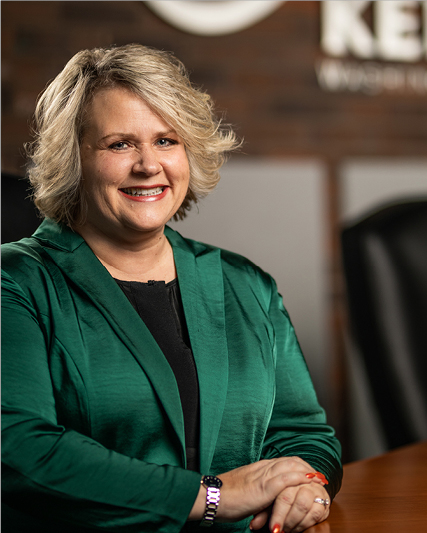Priority Hire Program Toolkit
The Priority Hire Toolkit is a set of tools designed to be used together to develop and implement a Local Hire/Priority Hire Program.
What Is The Priority Hire Program?
The Priority Hire Program addresses worker shortages by providing contractors access to trained construction workers from historically economically depressed zip codes.
Priority Hire Tools
Community Impact
“King County's priority hire program has the ability to lift economically disadvantaged residents into the middle class with good living wage careers in the Building Trades. We are exploring the program and looking for ways our residents, with a focus on our youth and young adults, can benefit from Priority Hire/ Local Hire programs.”- Dana Ralph, Mayor of Kent, WA
Priority Hire Program Successes & Economic Impacts 2021
- Priority Hire Apprentice rate increased to 45% - exceeding the required rate of 19%
- Priority Hire Journey Worker rate increased to 27% - exceeding the required rate of 16%
- 45 percent Priority Hire minority worker rate, an increase of 6 percent from 2020
- 13 percent Priority Hire women worker rate, an increase of 5 percent from 2020

Construction Projects
| RapidRide H Line Bus Rapid Transit Improvements | $27.3 Million |
| E Lake Sammamish Master Plan Trail – South Sammamish Segment B | $13Million |
| East Lake Sammamish Master Plan Trail - South Sammamish Segment B - Phase 1 | $12.3 Million |
| Eastside Rail Corridor Regional Trail NE 8th Street Crossing | $16.4 Million |
| Lake to Sound Trail – Segment C SeaTac REBID | $6.9 Million |
| Area 7 Stage 5 Closure and Area 7-8 Liner Tie-in | $13.6 Million |
| Georgetown Wet Weather Treatment Station | $96.2 Million |
| King County LOOP Vehicle Maintenance Facility - REBID | $12.7 Million |
| N Mercer Isl Interceptor & Enatai Interceptor Upgrade-Conveyance Imprv | $62.2 Million |
| N. Mercer Island & Enatai Interceptor-Pump Station Improvement | $24.9 Million |
| South Treatment Plant Heating Systems Improvements | $8 Million |
| WP Emergency Power Quality Improvement Construction Work Order | $21 Million |
| WPTP Digester 1 to 5 Low-Pressure Sludge Gas (LSG) Pipe Replacement | $7 Million |
| WPTP Primary Sedimentation Area Roof Structure | $20.3 Million |
| Fall City Floodplain Restoration Project | $8.9 Million |
| Jan Road Levee Setback | $9.5 Million |
| Lower Russell Levee Setback Phase 2 | $19.5 Million |
FAQ - Frequently Asked Questions
For answers to commonly asked questions when starting a Priority Hire Program, visit our Priority Hire FAQs document. This document highlights King County’s experience implementing Priority Hire and references data that backs up answers to commonly asked questions. The information in this document can be used to brief elected officials, management, program administrators, and project managers so they have a solid understanding of how a successful Priority Hire Program works prior to starting their own program.
All cities, school districts, colleges or other entities throughout King County that have an interest in developing and implementing a Local Hire/Priority Hire Program.
King County can help to support efforts to implement a priority/local hire program. Send an email to:
- A workforce and economic development strategy providing training and family wage employment opportunities in the construction industry on King County public works construction projects of $5 million or more.
- A King County policy that prioritizes local workers who reside in economically distressed communities for inclusion in our construction projects.
- It advances equity and social justice goals and grows a skilled workforce that is necessary for our region’s continued prosperity.
- It provides a short- and long-term strategy for increasing the supply of construction workers
- It improves access to local jobs that pay family wages and builds careers in the construction trades industry for residents of our local communities.
- Prioritizes economically disadvantaged local workers for inclusion in King County capital construction projects.
- Supports the hiring of residents who live in King County Priority Hire Zip Codes.
- Training and job opportunities in the construction industry for local residents needing family-wage jobs.
- Assists in addressing a widening gap between the demand for construction labor and the supply of skilled trade workers in our regional labor market.
- Individuals must reside in a King County Priority Hire ZIP codes
- King County has 43 Priority Hire ZIP codes that have high concentration of the following three criteria:
- People living under 200% below the Federal poverty level
- Unemployment
- People without a college degree
- $4.4 million in wages earned by priority hire workers, compared to $3.7 million in 2020
- 305,583 total Washington State labor hours on projects with Priority Hire requirements
- 93,875 priority hire labor hours, compared to 79,810 hours in 2020
- 45.1% Priority Hire apprentice participation rate, exceeding the required rate of 19.3 percent
- 27.1% Priority Hire journey worker participation rate, exceeding the required rate of 16.2 percent
- 577 Priority Hire workers, including 482 journey workers and 95 apprentices
- 45.2% Priority Hire minority worker participation ate, an increase of 6.2 percent from 2020
- 13.0% Priority Hire women worker participation rate, an increase of 5.4 percent from 2020
A pre-apprentice graduate is an individual who has completed a pre-apprentice training program, and has been accepted into an apprentice training program, including individuals who are still enrolled in their first year of apprentice training.
Preferred entry refers to an agreement provided by a Master Community Workforce Agreement (MCWA) that allows pre-apprentice graduates and Helmets to Hardhats veterans who are also priority workers to enter an apprentice training program ahead of other applicants.
A MCWA is a pre-hire collective bargaining agreement with one or more labor organizations that establishes the terms and conditions of employment for a specific construction project.
An apprentice is a person who is learning a trade while on-the-job and is enrolled in an apprentice training program. An apprentice program focuses on teaching specific skills needed to work independently in a specific trade
A journey worker is an individual who has sufficient skills and knowledge of an occupation, either through a formal apprentice training program or through practical on-the-job work experience, to be recognized by a state or federal registration agency and/or industry as being fully qualified to perform the work of the occupation. Practical experience must be equal to or greater than the term of an apprenticeship.

 Translate
Translate


